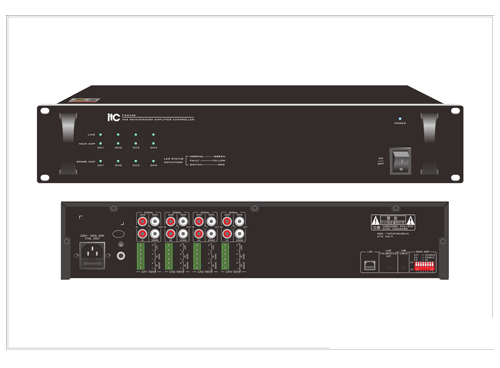
- General
- Solutions
- Products
- Cases
- Technology
- News


The master/slave switcher provides redundant backup for the power amplifier of the public broadcasting system, ensuring that the broadcast sound will not be interrupted due to damage to the power amplifier. It monitors the status of the main and standby power amplifiers in real time, automatically switches and recovers, and ensures that the signal can be directly output to the power amplifier even in the event of a power outage.
* It has 4 independent channels, each of which supports automatic detection and automatic switching of the main and backup amplifiers.
* Working mode: 4 active and 4 standby.
* The working status of the main and standby amplifiers can be seen through the indicator lights.
* When a main amplifier failure is detected, the backup amplifier will be automatically switched, and the main amplifier will be automatically switched back after the main amplifier failure is eliminated.
* Supports issuing an alarm when the volume of the main or backup amplifier is detected to be too low.
* Automatic switching time (failure switching time): no more than 200ms .
* The channel control capability can meet the needs of achieving master-slave switching using a single amplifier with a maximum power of 2000W.
* It has the function of detecting the line load factor, which can detect the change of the total line load factor and prompt the fault.
* Supports online device upgrade.
|
Voltage |
AC220V±20% 50-60Hz |
|
Maximum power consumption |
20W |
|
Line input sensitivity |
775mV |
|
Line input impedance |
10kΩ |
|
Line output sensitivity |
775mV |
|
Line output distortion |
<1% |
|
Line output frequency response |
80 Hz -16 k Hz |
|
Line output signal-to-noise ratio |
>73dB |
|
Fuse specifications |
250V/1A, slow type |
|
Amplifier output |
100V |
|
Dimensions ( L × W × H ) |
484×397.5×88 mm |
|
Weight |
About 7kg |